There are more competent firearms instructors teaching quality classes than ever before in human history. None of us has a corner on the market. Just like I’ve trained with dozens of top instructors over the years, my students will also train with other teachers. That’s a good thing.
In my view, steering our students towards other high quality instructors is one of our jobs in this industry. We know our students will train with other instructors. It’s up to us to point them in the right direction and steer them towards the good instructors and away from the industry trash.
I am doing a series of articles interviewing trainers from whom I’ve personally taken classes. These trainers may not be the people who you see every day in your Facebook and Instagram feeds. They may not be the “cool” folks to train with, but they teach quality classes and I can personally vouch for their knowledge and skills. These are the folks with whom you should be spending your training dollars.
This edition of “Trainers You Should Know” features Aqil Qadir and Tiffany Johnson from Citizens Safety Academy.
I first met Aqil almost 20 years ago when he attended a class I was teaching at the Tactical Defense Institute. Back then, he was a cop in New York and he was paying for the training class out of his own pocket. That is exceedingly rare in the policing world. Most cops hate training and would never even consider spending a couple thousand dollars a year in tuition, ammo, and travel costs. The fact that Aq was at the training class to become a more competent shooter gave him instant respect from me.
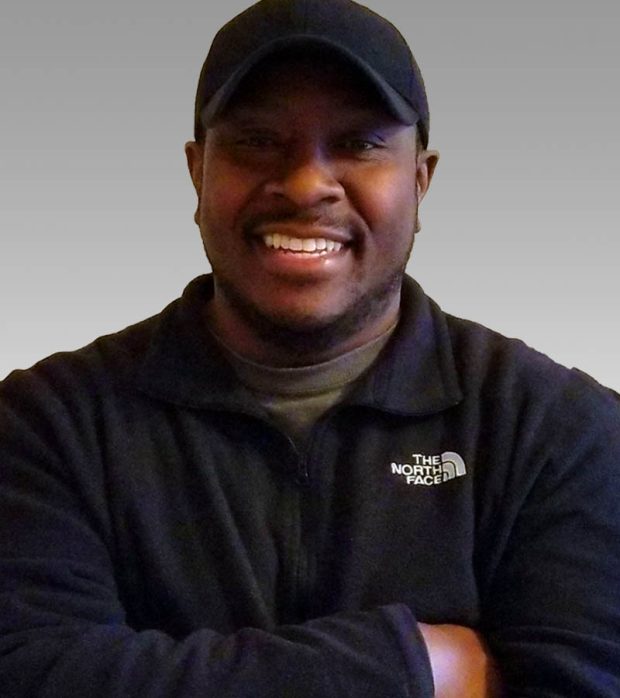
Aqil Qadir
I met Tiffany at the first Rangemaster Tactical Conference I attended 10 years ago. Tiffany is a lawyer in her other life and is probably one of the smartest people on the planet. She has studied the art of teaching more than any other instructors I know. Ever since meeting this dynamic duo, I’ve attended all of the classes they have taught at Rangemaster and will look forward to doing their instructor class sometime next year.
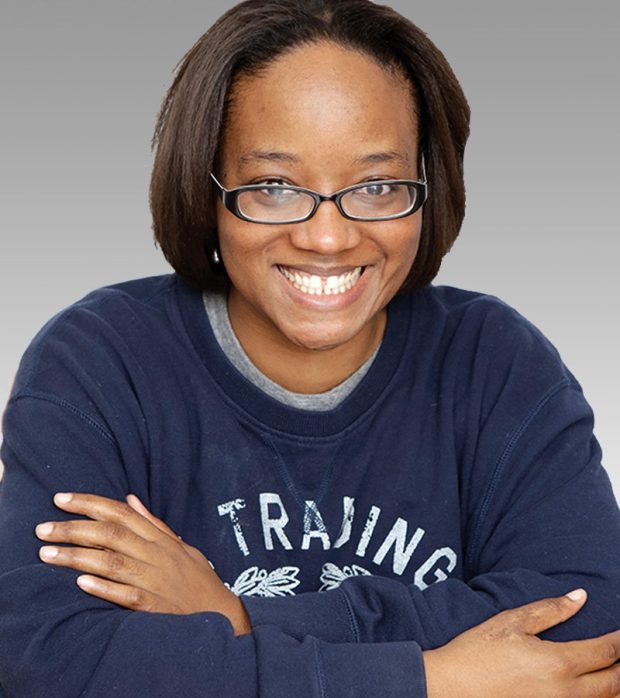
Tiffany Johnson
I interviewed Tiffany and Aq for this article. I think you will likely learn some important stuff if you take the time to read their responses below.
Background
Could you explain a little bit about your background and what trainers have had the most influence on your teaching?
Aq – My background is atypical in that where I grew up, gun culture was a counterculture of sorts. My father was a black NRA-Certified Instructor in Buffalo, NY. After a serial killer scare, he started an urban gun club trying to get urbanites to arm themselves in a city, county, and state that deliberately set barriers to gun ownership – especially handguns. He also taught permit classes, often attracting people who had no prior exposure to firearms and were frankly terrified of them. I was his apprentice, so I learned early how to teach people who had a cultural aversion to guns. My father was also a law enforcement firearms trainer of sorts and I became similar, so in many ways I’m just carrying on his legacy, which is not so common amongst African Americans. Besides my father, the trainers that have had the most influence on me are John Benner and Tom Givens.
Tiff – My background is also atypical, but for totally different reasons than Aq. I did not grow up around guns, I don’t come from an armed profession, and I spent the first half of my life fearful of guns and subscribing to many of the stereotypes that continue to mar the training community today. Then one day I got frustrated with my lack of control over those fears and decided to take a class. I also wanted to be able to speak more intelligently about guns as I explained to people why guns were destroying local neighborhoods. It was just by sheer dumb luck that the class I signed up for happened to be at Rangemaster with Tom Givens. I had no idea who Tom was at the time. But the class totally opened my eyes and made me rethink my prior opinions. I took more and more classes, Tom took me under his wing, a year later I got my first instructor certification, and the rest is history. But this is why I think top quality gateway instruction is so important. If I had walked into a different range and taken a class from a lesser instructor, my entire life trajectory would have been very different. I wouldn’t be getting interviewed by Greg Ellifritz, I wouldn’t be helping others overcome their fears like I did, and I wouldn’t be a friend to the Second Amendment community.
Gateway Training
You focus on “gateway training” for new shooters. How is that training different from training experienced shooters? What do you guys do differently compared to other basic pistol instructors?
Both – When we say “gateway instruction,” we mean true entry-level content, designed for students who’ve overcome boundaries, obstacles, social disincentives, or other adverse odds to learn to shoot for the first time. We have found that many “beginner” classes on the market are often weighed down by assumptions and misperceptions about what new shooters typically bring with them. These classes sometimes take for granted that every student has the same opinion about guns, everyone has the same understanding of gun safety, and everyone generally understands how guns work and what they’re used for. But that’s often not the case.
At CSA, we take a different approach. Gateway instruction levels the playing field by allowing all students to enter the firearms training world without any pressure to know more than they know or to be someone they aren’t. One of the many benefits of this teaching technique (and the reason we call it “gateway instruction”) is that it greatly increases the chances of students investing in more training and becoming members of the training community, rather than just visitors or sightseers. We hope to be an “on-ramp” for those who might otherwise see themselves as outsiders to the gun world.
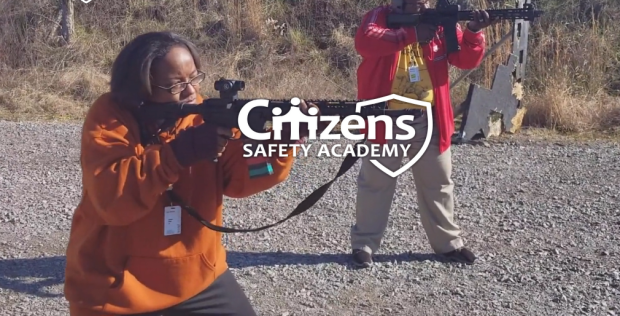
Philosophy
What is your philosophy regarding student skill acquisition?
Both – If we’re talking about adult learners in open enrollment classes, we believe they must have some kind of personal investment. There must be a clear, concrete, straightforward ROI that is immediate and palpable to them. Otherwise, the whole thing can feel at best like an obligatory field trip and at worst like yet another uncontrollable trauma in the student’s life. Neither is conducive to active learning. So, we have to help students appreciate why the skill they’re learning will yield direct benefits in their everyday life. Sometimes the benefit is abstract or intrinsic – like overcoming fear or checking something off a bucket list. Other times, the benefit is very concrete or extrinsic – like moving in with a partner who owns guns or preparing for the next thug who might rob the convenience store where a student works. But one of our jobs as instructors is to put our students in close touch with their own motivations for learning a new skill – both the obvious driving forces and the ones that may be more subliminally lurking beneath the surface.
Training Obstacles
What do you see as the biggest problem trainers have to overcome when teaching beginners classes?
Both – They have to overcome their misconceptions about students before they can help students overcome their misconceptions about guns. We remember taking entry-level classes and hearing instructors say things like, “guns really aren’t scary at all.” Well, of course they are. Or at least, it’s not illogical to harbor some level of fear about guns. People are rarely ostracized for being reticent to handle a blow torch or a chainsaw or for being nervous about learning to drive a car. But when newcomers to the gun world express hesitation, they are sometimes made to feel like that’s an unrealistic or silly reaction. It’s not.
It’s like in the book To Kill a Mockingbird, when Atticus Finch says you never really know a person until you can climb into that person’s skin and walk around a bit. That’s the tough part for many instructors teaching beginner students. They just cannot fathom how any sane person could be afraid of an inanimate object. But instructors have to stop projecting themselves onto their students and instead let their students be who they are. Lack of knowledge alone is a frightening thing, and that’s before you add explosives and projectiles. Instructors too often underestimate the time and energy it takes for some students to overcome those barriers and become comfortable enough to begin developing confidence and skill.
And speaking of time – that’s probably the second most difficult concept for instructors of new shooters. They almost always try to cram way too much material into too little time. If you’re teaching a four-hour class for total beginners and you plan to cover safety, parts and operation, fundamentals, accuracy, speed, distance, holster work, low light, shooting on the move, and jumping out of helicopters, your lesson plan is probably a little ambitious. We have taught entry-level classes where we work with students for four hours and end up firing maybe ten rounds – and they love it. They often thank us for allowing them to learn at their own pace and comfort level, with minimal pressures or distractions.
And since we mentioned it, there’s a third hurdle for instructors: overcoming the temptation to overload their classes with gratuitous live fire. A three-hour range session that uses 400 rounds of ammunition is not a beginner class. If it was supposedly meant for beginners, that would be a class designed for the instructor, not for the students.
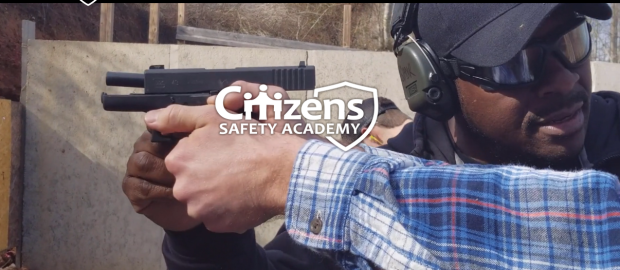
Curriculum
How is your training curriculum unique from other trainers in the industry? What do you do best?
Both – As you noted, our main focus is gateway instruction and training gateway instructors. We focus our attention primarily on first-time shooters, fearful shooters, and students who struggle with obstacles like past trauma, emotional hurdles, or social barriers. We also love helping other trainers better understand these obstacles so their students can successfully meet training goals and become repeat customers. Both our end-user classes and our instructor classes are built on proven adult learning techniques and effective instructional design. We really try to hone our skills as educators, not just as shooters.
Future of Training
How do you see the future of the training industry developing?
Tiff – For me, the first thing that comes to mind is online training. Synchronous and asynchronous online training is here to stay, folks. I remember when nobody thought firearms/defensive training could never take place remotely. The pandemic made a mockery of that notion. I’ve been teaching online, designing online curricula, and teaching other teachers how to teach online since the early 2000s, and I knew it was destined to catch on in the firearms world eventually. Sure enough, it has. Obviously, not everything can be done online. We can’t have online live fire, of course. But beyond that, the only limit is our imagination and creativity. Citizens Safety Academy has had lots of success with webinars and video-based classes, and we now have a standalone online training hub available at CitizensSafetyOnline.com where folks can access free and paid online courses from the beginner level to the instructor level.
I also agree with Karl Rehn that the new trend will be shorter classes – especially at the gateway and early intermediate levels. Most everyday folks will balk at the idea of spending two or three days away from their families or having to travel or take off work to play paramilitary games, as they see it. I think the half-day block is going to gain popularity and be more profitable for instructors in the future. The trend is already showing up at the USCCA and the NRA as they revamp their curricula to offer modular courses and mini-courses.
Aq – I agree with everything Tiff said, and I would also add that I see the industry leaning towards more dry fire and less live fire. It’s not just because of ammo costs and shortages, although that’s part of it. But it’s also due to solid inquiry and research by people like John Hearne who are starting to make waves about refocusing training priorities and rethinking what training techniques pay the highest dividends with the fewest resources.
Improving Instruction
What three things can instructors do to provide better training to beginning students?
Both – First, be nimble and flexible (which requires patience). It’s easy to settle into a comfort zone with teaching techniques that work most of the time. But then that day comes when the way you’ve always taught something just doesn’t work on one student. That’s when some instructors get defensive – they start wondering what’s wrong with the student. With beginner students, the better approach is to switch up your teaching technique – pull a different tool out of the old tool chest and try another way. If you’re rigid and inflexible, you won’t be equipped to best serve those students who throw you a curveball.
Second, make no assumptions about students (and don’t judge them). You never know what students in this target market are bringing to the table. You can’t assume they know anything at all about guns or the dynamics of violent adversarial encounters. The odds are far greater that they “know” a lot of misinformation that you’ll first have to unteach before you can make any headway in teaching new skills. Assuming your students come to the table with a general idea of how guns work is dangerous. It leads instructors to take shortcuts that leave holes in their students’ understanding. There is very little “common knowledge” at the beginner level, so nothing goes without saying. It all needs to be said, and re-said, and demonstrated, and reiterated, as often as time will allow. Along the same lines, instructors must resist the temptation to judge students for their lack of knowledge.
Third, appreciate the role that feelings play in acquiring any new skill. We love to quote Maya Angelou in class – “People will forget what you said. People will forget what you did. But people will never forget how you made them feel.” Feelings are much stronger motivators than reasoning. If emotion and logic were ever in a grudge match, emotion would kick logic’s ass every single time. That’s not an excuse to be illogical. But especially at the beginner level, instructors would be wise to embrace this very natural human tendency and wield it in their favor rather than trying to work against it.
How can we stir positive emotions in students? What emotional markers can we plant that will stick with our students long after they’ve forgotten the difference between double action and double action only? Aq likes to say gateway instructors are selling dope… and by that he means dopamine. Yes, we have serious topics to cover. But we can also have fun, boost their confidence, make them laugh, give them a sense of accomplishment, and offer them a means of empowered autonomy. In the process, we dissociate guns from all the horrible traumas that might have previously spawned fear, and we use emotions to instead associate firearms with all those positive concepts – confidence, independence, agency, etc.
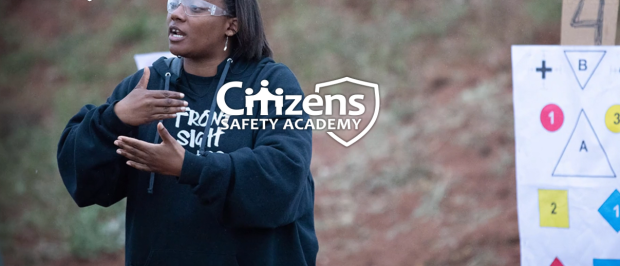
Favorite Classes
What class do you most like to teach and why?
Aq – Our four-hour How To Shoot A Handgun course. There’s something deeply satisfying about changing people’s opinions about firearms, relieving them of some of their fears, giving them the ability to choose to defend themselves, and hopefully bringing them over to the cause of the 2nd Amendment. I’m trying to find the next Tiffany Johnson.
Tiff – Ha! Aq is cracking me up LOL. For me, it’s definitely our new Gateway Instructor Certification Skills course. We’ve talked about why gateway instruction is so important to us, and here’s a class that focuses very precisely on just that. So many instructors assume teaching is teaching – regardless of the content or the students, it’s all done basically the same way. I love to see the light bulbs come on when we show trainers just how different gateway instruction really is. I love hearing their feedback as they start teeming with ideas on how to better reach new shooters and shooters facing obstacles or difficulties. We teach almost 2,000 students a year, but the Gateway Instructor course is where we can have the biggest impact, because the ripple effects are potentially endless.
Minority Groups
Your company does a lot of work training beginning shooters who belong to minority groups. What tips do you have for trainers wanting to teach students who belong to groups that have not traditionally embraced “gun culture?”
Both – This one hits close to home for us, and we’re very passionate about it. First – leave politics and religion out of the classroom. Period, end of story. That’s actually not unique to training minority groups but really should be implemented in any class, especially at the beginner level. Your political commentary and religious insights are utterly irrelevant to the products and services students are paying you to deliver. And even a seemingly innocent joke or quip can insinuate that the training community is only appropriate for certain types or groups of people but not others. This is a cancer not only for the training community but for the health and longevity of the Second Amendment.
You don’t take your car to the shop to get financial planning tips from the mechanic. People don’t expect and likely would not welcome dating advice from their dentist. Likewise, a firearms trainer has no reason to suggest or opine on who students should vote for, pray to, or marry.
We’re not saying you can’t have fun in class. By all means – appropriate doses of humor and levity can be one of the most effective teaching tools for a good instructor. But find humor in things that are relatable on a human level, not on a political, religious, racial, gender-based, or sexual level. Humanity is the one thing we all have in common, regardless of what minority group we might also belong to (and EVERYONE belongs to one minority group or another).
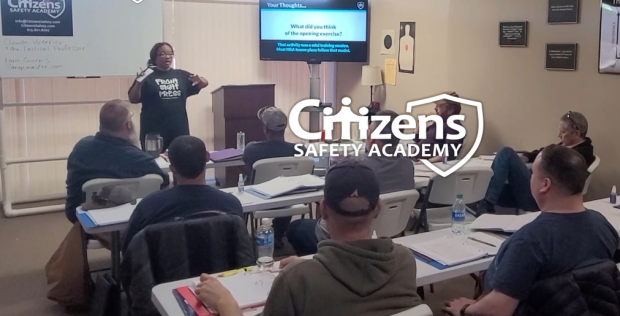
Recommended Resources
Are there any additional trainers, books, or videos you would recommend to students for future study?
Aq – Mike Seeklander’s The Art Of Instruction for instructors. Dave Spaulding’s Handgun Combatives for shooters. Gavin DeBecker’s The Gift Of Fear for everyone. They should follow Greg Ellifritz, Claude Werner, Chris Baker of Lucky Gunner, and the Rangemaster monthly newsletter. They should watch John Correia’s ASP channels for violence inoculation and other solid advice.
Tiff – For shooters, I’d of course recommend all of Tom Givens’s books – especially his most recent one, Concealed Carry Class. For folks looking to find ways to make better use of their time at the range and get some scaffolding for a more structured training journey, Karl Rehn and John Daub have a great book called Strategies and Standards for Defensive Handgun Training. I also recommend the PHLster YouTube channel to anyone exploring concealed carry or teaching concealed carriers. Jon and Sarah Hauptman are doing yeoman’s work on that front. For aspiring instructors, I recommend Telling Ain’t Training by Harold Stolovitch and Erica Keeps. Design for How People Learn by Julie Dirksen is another good one for instructors.
Bottom line – I’d strongly recommend that instructors actively study the art of instruction, not just the art of shooting. Teaching and shooting are two very different tasks that require different skill sets. Far too many instructors solely focus on shooting and rarely sharpen their skills as teachers.
Travel
You’re located in Murfreesboro, just outside of Nashville Tennessee. Do you travel?
Both – Absolutely! We’ve been taking our classes on the road for several years now, and recently there’s been quite an uptick in interest for our Gateway Instructor Certification Course (thanks in large part to Lee Weems and his very popular podcast). Our website lists all our classes, and we’d love to hear from anyone interested in hosting us. We can send you a copy of our hosting guide, which spells out all the requirements to host our classes. Partners can also host us for online training, which doesn’t have the geographical limitations and logistical challenges of in-person training. Tim Kelly from Apache Solutions hosted our three-part instructor webinar series called Building Your Firearms Course, and it sold out! That was a lot of fun. We’d love to do that one again or team up for other webinar content. So if you’d like to discuss hosting opportunities, just shoot us an email at info@citizenssafety.com. We’d love to work with you.
Thanks to Aqil and Tiffany for the incredibly detailed responses they gave to my questions. I hope you get an idea of their competence and professionalism when you read their thoughts on some important issues weighing heavily on the training community.
Their contact information is below. Sign up for one of their classes. I promise you won’t be disappointed.
Aqil Qadir Tiffany Johnson
Founder, Owner, Chief Instructor Lead Instructor
Citizens Safety Academy Citizens Safety Academy
aqil@citizenssafety.com tiffany@citizenssafety.com
Main Website – www.citizenssafety.com
Online Training – www.citizenssafetyonline.com
Business Email – info@citizenssafety.com
